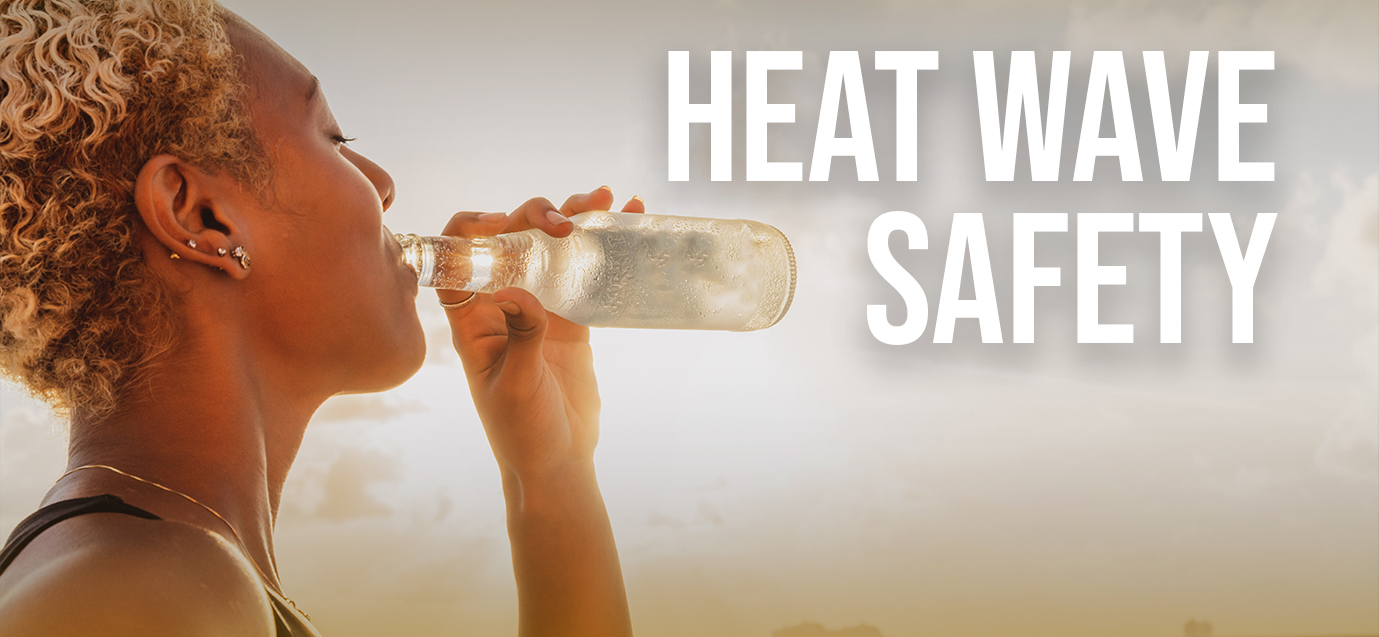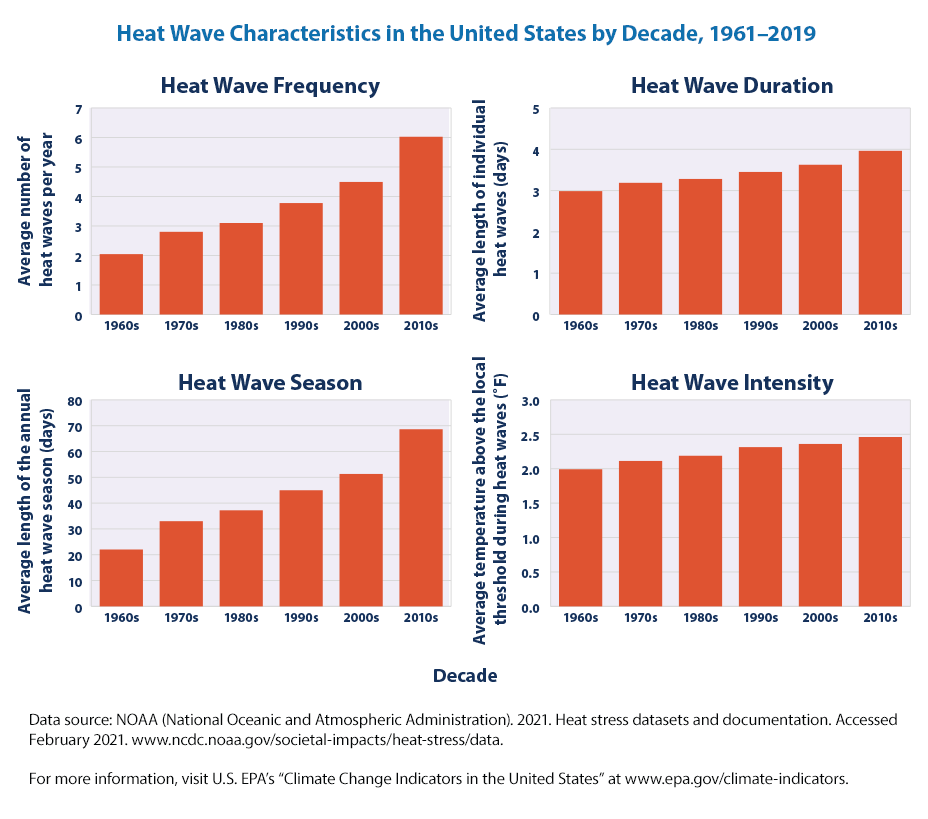
Heat Wave Safety Tips
Wednesday July 6, 2022
The peak of summer in the U.S. is approaching quickly, meaning that many will experience severe heat waves in the coming weeks. A heat wave is a series of unusually hot days, defined as two or more consecutive days where the daily minimum temperature is higher than the 85th percentile of historic temperatures for that area. This is especially important since the duration, intensity and frequency of summer heat waves have all increased since the 1960’s.

(EPA.gov)
Understanding Heat Warning Terms
The first step in preparing for a Heat Wave is understanding the National Weather Service terms for heat warnings. An Excessive Heat Outlook is the initial warning, it means the potential exists for an excessive heat event in the next 3-7 days. An Excessive Heat Watch means conditions are favorable for an excessive heat event in the next 24 to 72 hours. It is used when the risk of an extreme heat event has increased, but its occurrence and timing is still uncertain. The final warning is an Excessive Heat Warning/Advisory, this means that extremely dangerous heat is 12 hours away and you should take precautions to avoid heat related illness.
How to Prepare
Water is the most important tool to combat heat-related illness. The average person should drink 14 cups or 3/4 of a gallon of water each day to stay hydrated. It’s also important to avoid drinks that can dehydrate you like overly sugary, caffeinated, or alcoholic drinks. Alongside water, it’s important to eat food and snacks that replenish electrolytes and salt lost from sweat.
Supplies
Gather necessary items into a Go-Bag and stay-at-home-bag. A Go-Bag should have enough supplies to last 3-days and be light enough to be carried. A stay-at-home-kit should have 2 weeks of supplies for staying home. Use the list to build out your kits:
· Neck Cooling Towel
· 20-Year Shelf-Life Water
· Cold Pack
· Sunscreen Towelettes
· Flashlight or Lantern in case of power outage
· Shelf-Stable Meals
· Weather Alert Radio
· Mylar Blanket
· Bug Repellant Towelette
Other items may be necessary depending on your personal needs. Be sure to have a supply of medications and a copy of important documents in your kits.
Treating Heat-Related Illness
It’s important to be able to notice the signs of heat-related illnesses as early as possible so that proper care can be administered. The most common illnesses are heat cramps, heat exhaustion, and heat stroke.
Treating Heat Cramps
Muscle spasms in the abdomen, arms or calves caused by loss of salt and water. Usually shown through heavy sweating and muscle pain/spasms. If you think you or someone else has heat cramps, stop physical activity, drink water or sports drink and wait for cramps to go away before resuming activity.
Treating Heat Exhaustion
Severe heat-related illness that requires emergency medical treatment. Common symptoms are heavy sweating, cold, pale or clammy skin, fast and weak pulse, nausea, cramps, weakness, headache and dizziness. Get medical help immediately if vomiting occurs or symptoms get worse. In mild cases the person affected should be moved to a cool place, use a cool rag or fan to aid in cooling. Sipping water can also be helpful.
Treating Heat Stroke
Heat Stroke is the most serious medical condition caused by heat. It requires immediate medical treatment and can result in death without treatment. Look for high body temperature (104°F or higher), hot, red or damp skin, fast and strong pulse, headache, dizziness, nausea, confusion and losing consciousness. If you think someone has heat stroke call 911 immediately. Move the person affected to a cooler place, do not give the person anything to drink as fluids may enter the lungs through the trachea or airway.
ProPac can provide many items for preparing for heat waves including many items not listed above. To see our full catalog of items, visit ProPacUSA.com